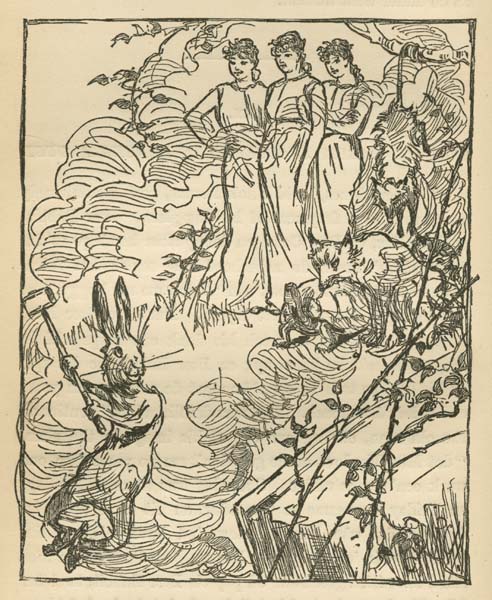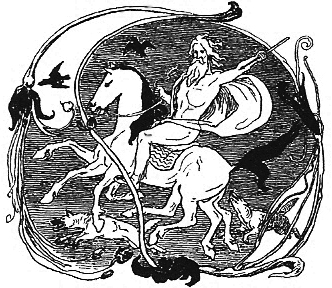|
Trickster (other)
In mythology and the study of folklore and religion, a trickster is a character in a story ( god, goddess, spirit, human or anthropomorphisation) who exhibits a great degree of intellect or secret knowledge and uses it to play tricks or otherwise disobey normal rules and defy conventional behavior. Mythology Tricksters, as archetypal characters, appear in the myths of many different cultures. Lewis Hyde describes the trickster as a "boundary-crosser".Hyde, Lewis. ''Trickster Makes This World: Mischief, Myth, and Art''. New York: Farrar, Straus and Giroux, 1998. The trickster crosses and often breaks both physical and societal rules: Tricksters "violate principles of social and natural order, playfully disrupting normal life and then re-establishing it on a new basis." Often, this bending or breaking of rules takes the form of tricks or thievery. Tricksters can be cunning or foolish or both. The trickster openly questions, disrupts or mocks authority. Many cultures have ... [...More Info...] [...Related Items...] OR: [Wikipedia] [Google] [Baidu] |
Culture Hero
A culture hero is a mythological hero specific to some group ( cultural, ethnic, religious, etc.) who changes the world through invention or discovery. Although many culture heroes help with the creation of the world, most culture heroes are important because of their effect on the world after creation. A typical culture hero might be credited as the discoverer of fire, agriculture, songs, tradition, law, or religion, and is usually the most important legendary figure of a people, sometimes as the founder of its ruling dynasty. Culture heroes in mythology History of a culture hero The term "culture hero" was originated by historian Kurt Breysig, who used the German word ''heilbringer,'' which translates to ''savior''. Over the years, "culture hero" has been interpreted in many ways. Older interpretations by Breysig, Paul Ehrenreich, and Wilhelm Schmidt thought that the journeys of culture heroes were ways in which humans could attempt to understand things in nature, such ... [...More Info...] [...Related Items...] OR: [Wikipedia] [Google] [Baidu] |
Sacred
Sacred describes something that is dedicated or set apart for the service or worship of a deity; is considered worthy of spiritual respect or devotion; or inspires awe or reverence among believers. The property is often ascribed to objects (a " sacred artifact" that is venerated and blessed), or places (" sacred ground"). French sociologist Émile Durkheim considered the dichotomy between the sacred and the profane to be the central characteristic of religion: "religion is a unified system of beliefs and practices relative to ''sacred things'', that is to say, things set apart and forbidden." Durkheim, Émile. 1915. ''The Elementary Forms of the Religious Life''. London: George Allen & Unwin. . In Durkheim's theory, the sacred represents the interests of the group, especially unity, which are embodied in sacred group symbols, or using team work to help get out of trouble. The profane, on the other hand, involve mundane individual concerns. Etymology The word ''sacred'' des ... [...More Info...] [...Related Items...] OR: [Wikipedia] [Google] [Baidu] |
Persona
A persona (plural personae or personas), depending on the context, is the public image of one's personality, the social role that one adopts, or simply a fictional Character (arts), character. The word derives from Latin, where it originally referred to a theatrical mask. On the social web, users develop virtual personas as online identity, online identities. Etymology The Latin word probably derived from the Etruscan language, Etruscan word "", with the same meaning, and that from the Greek ('). Its meaning in the latter Roman period changed to indicate a "character" of a theatrical performance or court of law, when it became apparent that different individuals could assume the same role and that legal attributes such as rights, powers, and duties followed the role. The same individuals as actors could play different roles, each with its own legal attributes, sometimes even in the same court appearance. According to other sources, which also admit that the origin of the ter ... [...More Info...] [...Related Items...] OR: [Wikipedia] [Google] [Baidu] |
Clown
A clown is a person who performs comedy and arts in a state of open-mindedness using physical comedy, typically while wearing distinct makeup or costuming and reversing folkway-norms. History The most ancient clowns have been found in the Fifth Dynasty of Egypt, around 2400 BC. Unlike court jesters, clowns have traditionally served a socio-religious and psychological role, and traditionally the roles of priest and clown have been held by the same persons. Peter Berger writes, "It seems plausible that folly and fools, like religion and magic, meet some deeply rooted needs in human society." For this reason, clowning is often considered an important part of training as a physical performance discipline, partly because tricky subject matter can be dealt with, but also because it requires a high level of risk and play in the performer. In anthropology, the term ''clown'' has been extended to comparable jester or fool characters in non-Western cultures. A society in which ... [...More Info...] [...Related Items...] OR: [Wikipedia] [Google] [Baidu] |
Praying Mantis
Mantises are an order (Mantodea) of insects that contains over 2,400 species in about 460 genera in 33 families. The largest family is the Mantidae ("mantids"). Mantises are distributed worldwide in temperate and tropical habitats. They have triangular heads with bulging eyes supported on flexible necks. Their elongated bodies may or may not have wings, but all Mantodea have forelegs that are greatly enlarged and adapted for catching and gripping prey; their upright posture, while remaining stationary with forearms folded, has led to the common name praying mantis. The closest relatives of mantises are termites and cockroaches (Blattodea), which are all within the superorder Dictyoptera. Mantises are sometimes confused with stick insects ( Phasmatodea), other elongated insects such as grasshoppers (Orthoptera), or other more distantly related insects with raptorial forelegs such as mantisflies (Mantispidae). Mantises are mostly ambush predators, but a few ground-dwelling s ... [...More Info...] [...Related Items...] OR: [Wikipedia] [Google] [Baidu] |
ǀKaggen
ǀKaggen pronounced (more accurately ǀKágge̥n or ǀKaggən, sometimes spelled as Cagn, �aɡən and sometimes called Mantis) is a demiurge and folk hero of the ǀXam people of southern Africa. He is a trickster god who can shape shift, usually taking the form of a praying mantis but also a bull eland, a louse, a snake, and a caterpillar.Bleek (1875A brief account of Bushman folklore and other texts/ref> Shapeshifting ǀKaggen is a trickster who is able to shape shift into the form of any animal.Stookey, p.184 He is most frequently represented as a praying mantis but also takes the form of a bull eland, a louse, a snake, and a caterpillar.Hastings, p.522Meletinsky, p.169 His wife, ǀHúnntuǃattǃatte̥n (sometimes spelled as Coti), is represented as a marmot or rather a Cape hyrax and is known as the mother of bees.Moore, p.113Lewis-Williams (2000), p.143 Their adopted daughter is represented as a porcupine. Eland myth One of the first animals created by ǀKaggen, and his ... [...More Info...] [...Related Items...] OR: [Wikipedia] [Google] [Baidu] |
Anansi
Anansi ( ; literally translates to ''spider'') is an Akan folktale character and the Akan God of Stories, Wisdom, Knowledge, and possibly creation. The form of a spider is the most common depiction of Anansi. He is also, sometimes considered to be God of all knowledge of stories. Taking the role of trickster, he is also one of the most important characters of West African, African American and West Indian folklore. Originating in Ghana, West Africa, these spider tales were transmitted to the Caribbean by way of the transatlantic slave trade. Anansi is best known for his ability to outsmart and triumph over more powerful opponents through his use of cunning, creativity and wit.Respond to this article at Despite taking on the role of the trickster, Anansi's actions and parables often carry him as protagonist due to his ability to transform his apparent weaknesses into virtues. He is among several West African tricksters including Br'er Rabbit and Leuk Rabbit, who have persisted in ... [...More Info...] [...Related Items...] OR: [Wikipedia] [Google] [Baidu] |
Br'er Rabbit
Br'er Rabbit (an abbreviation of ''Brother Rabbit'', also spelled Brer Rabbit) is a central figure in an oral tradition passed down by African-Americans of the Southern United States and African descendants in the Caribbean, notably Afro-Bahamians and Turks and Caicos Islanders. He is a trickster who succeeds by his wits rather than by brawn, provoking authority figures and bending social mores as he sees fit. Popularly known adaptations of the character was originally written by Joel Chandler Harris in the 19th century, and later by Walt Disney Productions adapted it for the film ''Song of the South'' in 1946. __TOC__ African origins The Br'er Rabbit stories can be traced back to trickster figures in Africa, particularly the hare that figures prominently in the storytelling traditions in West, Central, and Southern Africa. Among the Temne people in Sierra Leone, they tell children stories of a talking rabbit. Other regions of Africa also tell children stories of talkin ... [...More Info...] [...Related Items...] OR: [Wikipedia] [Google] [Baidu] |
African Americans
African Americans (also referred to as Black Americans and Afro-Americans) are an ethnic group consisting of Americans with partial or total ancestry from sub-Saharan Africa. The term "African American" generally denotes descendants of enslaved Africans who are from the United States. While some Black immigrants or their children may also come to identify as African-American, the majority of first generation immigrants do not, preferring to identify with their nation of origin. African Americans constitute the second largest racial group in the U.S. after White Americans, as well as the third largest ethnic group after Hispanic and Latino Americans. Most African Americans are descendants of enslaved people within the boundaries of the present United States. On average, African Americans are of West/ Central African with some European descent; some also have Native American and other ancestry. According to U.S. Census Bureau data, African immigrants generally do not se ... [...More Info...] [...Related Items...] OR: [Wikipedia] [Google] [Baidu] |
Sleipnir
In Norse mythology, Sleipnir (Old Norse: ; "slippy"Orchard (1997:151). or "the slipper"Kermode (1904:6).) is an eight-legged horse ridden by Odin. Sleipnir is attested in the ''Poetic Edda'', compiled in the 13th century from earlier traditional sources, and the ''Prose Edda'', written in the 13th century by Snorri Sturluson. In both sources, Sleipnir is Odin's steed, is the child of Loki and Svaðilfari, is described as the best of all horses, and is sometimes ridden to the location of Hel (location), Hel. The ''Prose Edda'' contains extended information regarding the circumstances of Sleipnir's birth, and details that he is grey in color. Sleipnir is also mentioned in a riddle found in the 13th century legendary saga ''Hervarar saga ok Heiðreks'', in the 13th-century legendary saga ''Völsunga saga'' as the ancestor of the horse Grani, and book I of ''Gesta Danorum'', written in the 12th century by Saxo Grammaticus, contains an episode considered by many scholars to involve Sl ... [...More Info...] [...Related Items...] OR: [Wikipedia] [Google] [Baidu] |
Shapeshifting
In mythology, folklore and speculative fiction, shape-shifting is the ability to physically transform oneself through an inherently superhuman ability, divine intervention, demonic manipulation, Magic (paranormal), sorcery, Incantation, spells or having inherited the ability. The idea of shape-shifting is in the oldest forms of totemism and shamanism, as well as the oldest existent literature and Epic poetry, epic poems such as the ''Epic of Gilgamesh'' and the ''Iliad''. The concept remains a common literary device in modern fantasy, children's literature and popular culture. Folklore and mythology Popular shape-shifting creatures in folklore are werewolf, werewolves and vampires (mostly of European, Canadians, Canadian, and Native Americans in the United States, Native American/early American origin), Ichchadhari naag and naagin (shape-shifting cobra), ichchadhari naag and ichchadhari naagin (shape-shifting cobras) of India, the huli jing of East Asia (including the ... [...More Info...] [...Related Items...] OR: [Wikipedia] [Google] [Baidu] |







